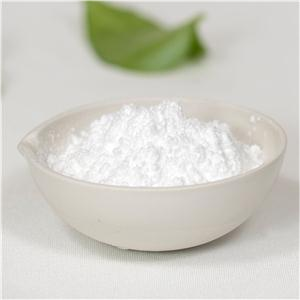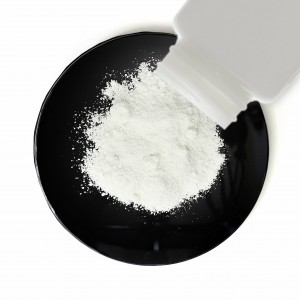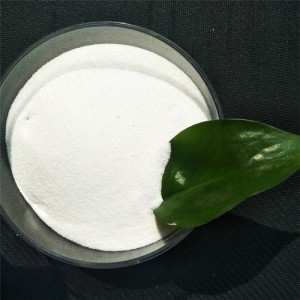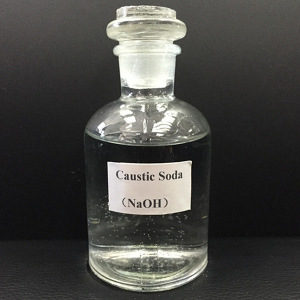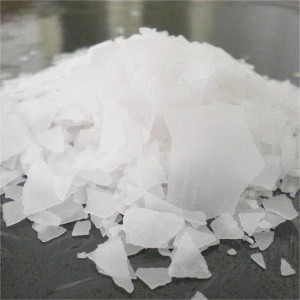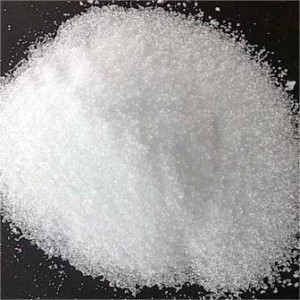Strontium carbonate
Strontium carbonate is an important industrial raw material with a wide range of uses. It is a carbonate mineral, belonging to the aragonite group, which is relatively rare and occurs in limestone or marlstone in the form of veins. In nature, it mostly exists in the form of mineral rhodochrosite and strontite, coexisting with barium carbonate, barite, calcite, celestite, fluorite and sulfide, odorless and tasteless, mostly white fine powder or colorless rhombic crystal, or gray, yellow-white, green or brown when infected by impurities. Strontium carbonate crystal is needle-shaped, and its aggregate is mostly granular, columnar, and radioactive needles. Its appearance is colorless, white, green-yellow, with transparent to translucent glass luster, fracture oil luster, brittle, and weak light blue light under the cathode ray. Strontium carbonate is stable, insoluble in water, slightly soluble in ammonia, ammonium carbonate and carbon dioxide saturated aqueous solution, and insoluble in alcohol. In addition, strontium carbonate is also an important raw material for celestite, a rare mineral source. At present, high-grade celestite is nearly exhausted.
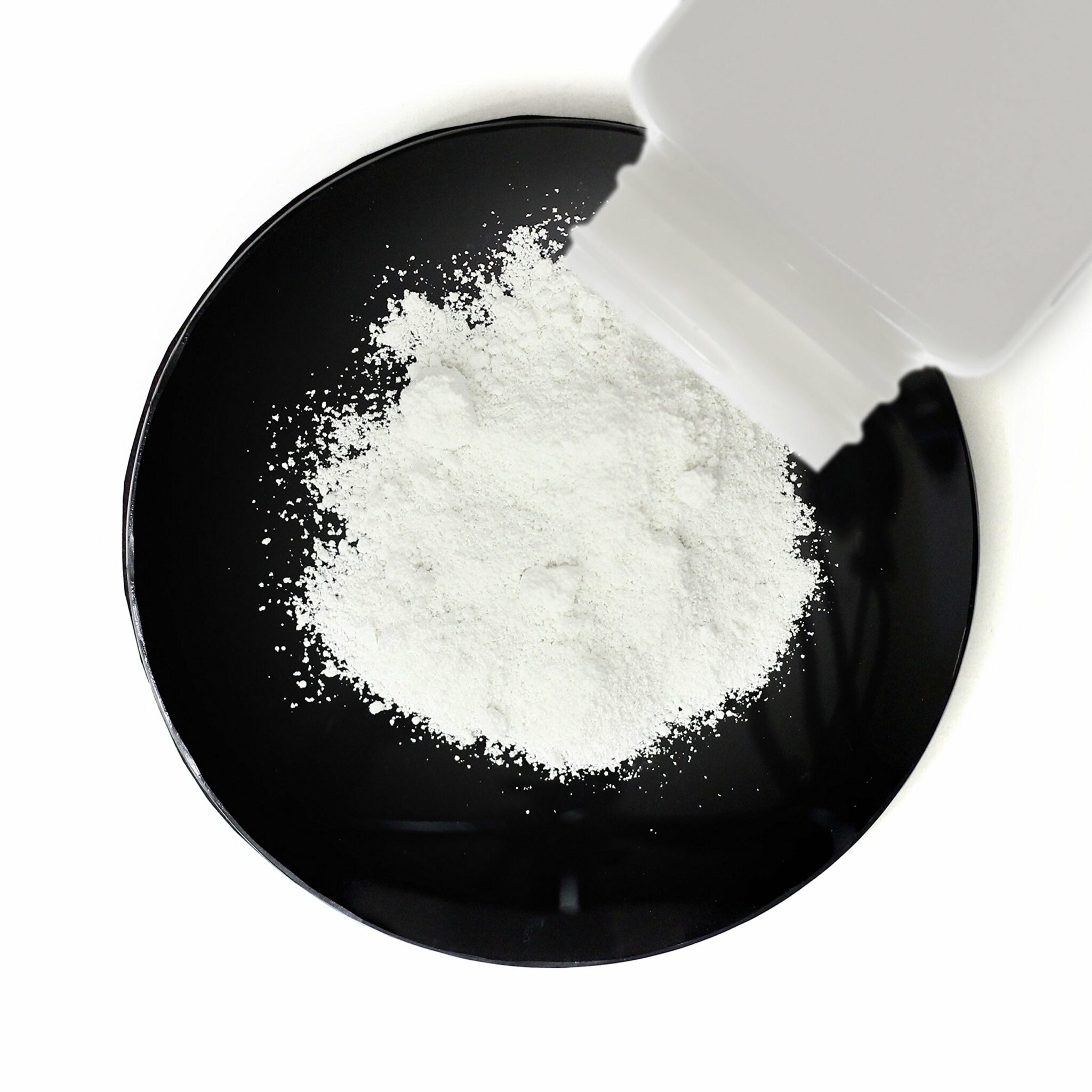
With the continuous development of world industry, the application field of strontium has also expanded. From the 19th century to the beginning of this century, people used strontium hydroxide to make sugar and purify beet syrup; During the two world wars, strontium compounds were widely used in the production of fireworks and signal bombs; In the 1920s and 1930s, strontium carbonate was used as a desulfurizer for steelmaking to remove sulfur, phosphorus and other harmful substances; In the 1950s, strontium carbonate was used to purify zinc in the production of electrolytic zinc, with a purity of 99.99%; In the late 1960s, strontium carbonate was widely used as a magnetic material; Strontium titanate is used as computer memory, and strontium chloride is used as rocket fuel; In 1968, strontium carbonate was applied to color TV screen glass because it was found to be used for good X-ray shielding performance. Now the demand is growing rapidly and has become one of the main application fields of strontium; Strontium is also expanding its application range in other fields. Since then, strontium carbonate and other strontium compounds (strontium salts) as important inorganic salt raw materials have received widespread attention and attention.
As an important industrial raw material, strontium carbonate is widely used in the production of picture tubes, monitors, industrial monitors, electronic components, etc. At the same time, strontium carbonate is also the main raw material for the preparation of metallic strontium and various strontium salts. In addition, strontium carbonate can also be used in the production of fireworks, fluorescent glass, signal bombs, paper making, medicine, analytical reagents, sugar refining, zinc metal electrolyte refining, strontium salt pigment manufacturing, etc. With the increasing demand for high-purity strontium carbonate, such as large-screen color TV sets, color displays for computers and high-performance magnetic materials, etc. The production of strontium products in Japan, the United States, Germany and other developed countries has declined year by year due to the depletion of mineral veins, rising energy costs and environmental pollution. So far, the application market of strontium carbonate can be seen.
Now, we will introduce the specific application of strontium carbonate:
First of all, strontium carbonate is divided into granular and powdery specifications. The granular is mainly used in TV glass in China, and the powder is mainly used in the production of strontium ferrite magnetic materials, nonferrous metal smelting, red pyrotechnic heartliver and the production of high-purity strontium carbonate for advanced electronic components such as PTC, mainly used in the production of TV glass and display glass, strontium ferrite, magnetic materials and nonferrous metal desulfurization, and also used in the production of fireworks, fluorescent glass, Signal bomb, paper making, medicine, analytical reagent and raw materials for manufacturing other strontium salts.
The main uses of strontium carbonate in electronic applications are:
Used for manufacturing color television receiver (CTV) to absorb electrons generated by cathode
1.Manufacture of strontium ferrite for permanent magnets used in loudspeakers and door magnets
2.Production of cathode ray tube for color TV
3.Also used for electromagnets and strontium ferrite
4.Can be made into small motors, magnetic separators and loudspeakers
5.Absorb X-rays
6.It is used for manufacturing some superconductors, such as BSCCO, and also for electroluminescent materials. First, it is calcined into SrO, and then mixed with sulfur to make SrS: x, where x is usually europium.
In the ceramic industry, strontium carbonate plays such a role:
1.It is widely used as an ingredient of glaze.
2.It acts as a flux
3.Change the color of some metal oxides.
Of course, the most common use of strontium carbonate is as a cheap colorant in fireworks.
In short,strontium carbonate is widely used, mainly in the production of TV glass and display glass, strontium ferrite, magnetic materials and nonferrous metal desulfurization and other industries, or in the production of fireworks, fluorescent glass, signal bombs, paper making, medicine, analytical reagents and raw materials for manufacturing other strontium salts.
According to statistics, China has more than 20 enterprises engaged in strontium carbonate production, with a total annual production capacity of 289000 tons, becoming the world's largest producer and consumer of carbonated gills, and exporting to all parts of the world, enjoying a high reputation in the international market. According to the customs statistics, China's exports of strontium carbonate in recent years are respectively 78700 tons in 2003, 98000 tons in 2004 and 33000 tons in 2005, accounting for 34.25%, 36.8% and 39.7% of the country's total output and 52.5%, 54.7% and 57.8% of the international market trade. Celestite, the main raw material of strontium carbonate, is a scarce mineral in the world and is a non-renewable rare mineral resource.
As we all know, strontium is an important mineral resource with a wide range of uses. One of its uses is to process strontium salts, such as strontium carbonate, strontium titanate, nitrate, strontium oxide, strontium chloride, strontium chromate, strontium ferrite, etc. Among them, the largest amount is to produce strontium carbonate.
In China, our strontium carbonate has a certain advantage in terms of supply and production. It can be said that the market prospect of strontium carbonate is promising.
1.Complex decomposition method.
The celestite was crushed and reacted with soda ash solution for 2h at a reaction temperature of 100 ℃. The initial concentration of sodium carbonate is 20%, the amount of sodium carbonate added is 110% of the theoretical amount, and the particle size of ore powder is 80 mesh. Under this condition, the decomposition rate can reach more than 97%. After filtration, the concentration of sodium sulfate in the filtrate can reach 24%. Beat the crude strontium carbonate with water, add hydrochloric acid seasoning slurry to pH3, and after 2~3h at 90~100 ℃, add barium remover to remove barium, and then adjust the slurry with ammonia to pH6.8~7.2 to remove impurities. After filtration, the filtrate precipitates strontium carbonate with ammonium bicarbonate or ammonium carbonate solution, and then filter to remove the ammonium chloride solution. After drying the filter cake, the strontium carbonate product is prepared.
SrSO4+Na2CO3→SrCO3+Na2SO4
SrCO3+2HCl→SrCl2+CO2↑+H2O
SrCl2+NH4HCO3→SrCO3+NH4Cl+HCl
2.Coal reduction method.
Celestite and pulverized coal are crushed to pass 20 meshes as raw materials, the ratio of ore to coal is 1:0.6~1:0.7, reduced and roasted at the temperature of 1100~1200 ℃, after 0.5~1.0h, the calcined material is leached twice, washed once, leached at 90 ℃, soaked for 3h each time, and the total leaching rate can reach more than 82%. The leaching solution is filtered, the filter residue is leached by hydrochloric acid, and strontium is further recovered, and the filtrate is added with mirabilite solution to remove barium, Then add ammonium bicarbonate or sodium carbonate solution to react to generate strontium carbonate precipitation (or directly carbonize with carbon dioxide), and then separate, dry, and grind to produce strontium carbonate products.
SrSO4+2C→SrS+2CO2
2SrS+2H2O → Sr (OH) 2+Sr (HS) 2
Sr(OH)2+Sr(HS)2+2NH4HCO3→2Sr(CO3+2NH4HS+2H2O
3.Thermal solution of strontium siderite.
The strontium siderite and coke are crushed and mixed into a mixture according to the ratio of ore to coke=10:1 (weight ratio). After roasting at 1150~1250 ℃, the carbonates are decomposed to produce clinker containing strontium oxide and other metal oxides. The clinker is leached by three steps, and the best temperature is 95 ℃. The second and third steps can be leached at. Conduct at 70-80 ℃. The leaching solution makes the concentration of strontium hydroxide to be 1mol/L, which is conducive to the separation of impurities Ca2+and Mg2+. Add ammonium bicarbonate to the filtrate for carbonization to obtain strontium carbonate. After separation, drying and crushing, the finished strontium carbonate is obtained.
SrCO3→SrO+C02↑
SrO+H2O→Sr(OH)2
Sr(OH)2+NH4HCO3→SrCO3↓+NH3·H2O+H2O
4. Comprehensive use.
From the underground brine containing bromine and strontium, the strontium containing mother liquor after bromine extraction is neutralized with lime, evaporated, concentrated and cooled, and sodium chloride is removed, and then calcium is removed by caustic soda, and ammonium bicarbonate is added to convert strontium hydroxide into strontium carbonate precipitation, and then rinsed and dried to produce strontium carbonate products.
SrC12+2NaOH→Sr(OH)2+2NaCl
Sr(OH)2+NH4HCO3→SrCO3+NH3·H2O+H2O

Wow! You know, Wit-Stone is very good company! The service is really excellent, the product packaging is very good, the delivery speed is also very fast, and there are employees who answer questions online 24 hours a day.
The company's service is really surprising. All the goods received are well packed and attached with relevant marks. The packaging is tight and the logistics speed is fast.


The quality of the products is absolutely superior. To my surprise, the company's service attitude from the time of accepting the inquiry to the time when I confirmed the receipt of goods was first-class, which made me feel very warm and a very happy experience.
